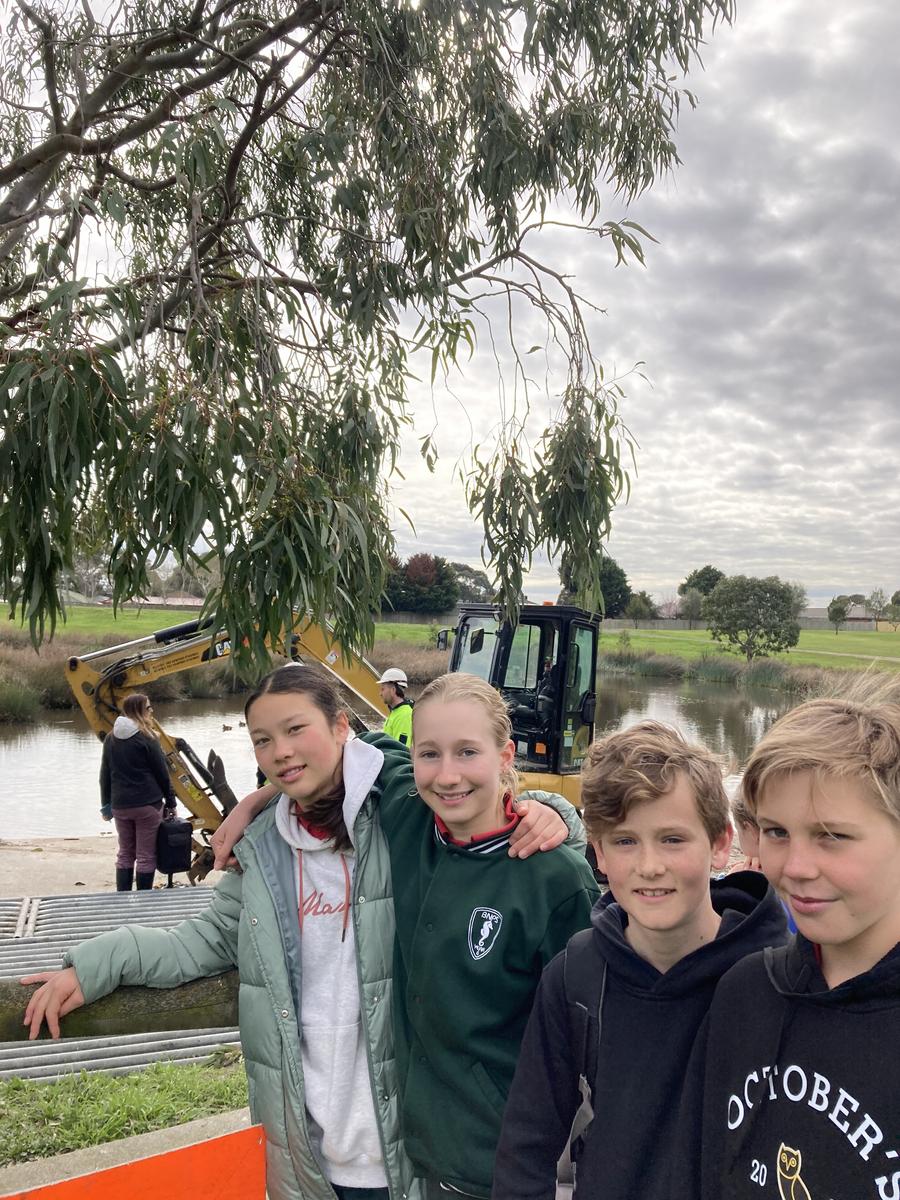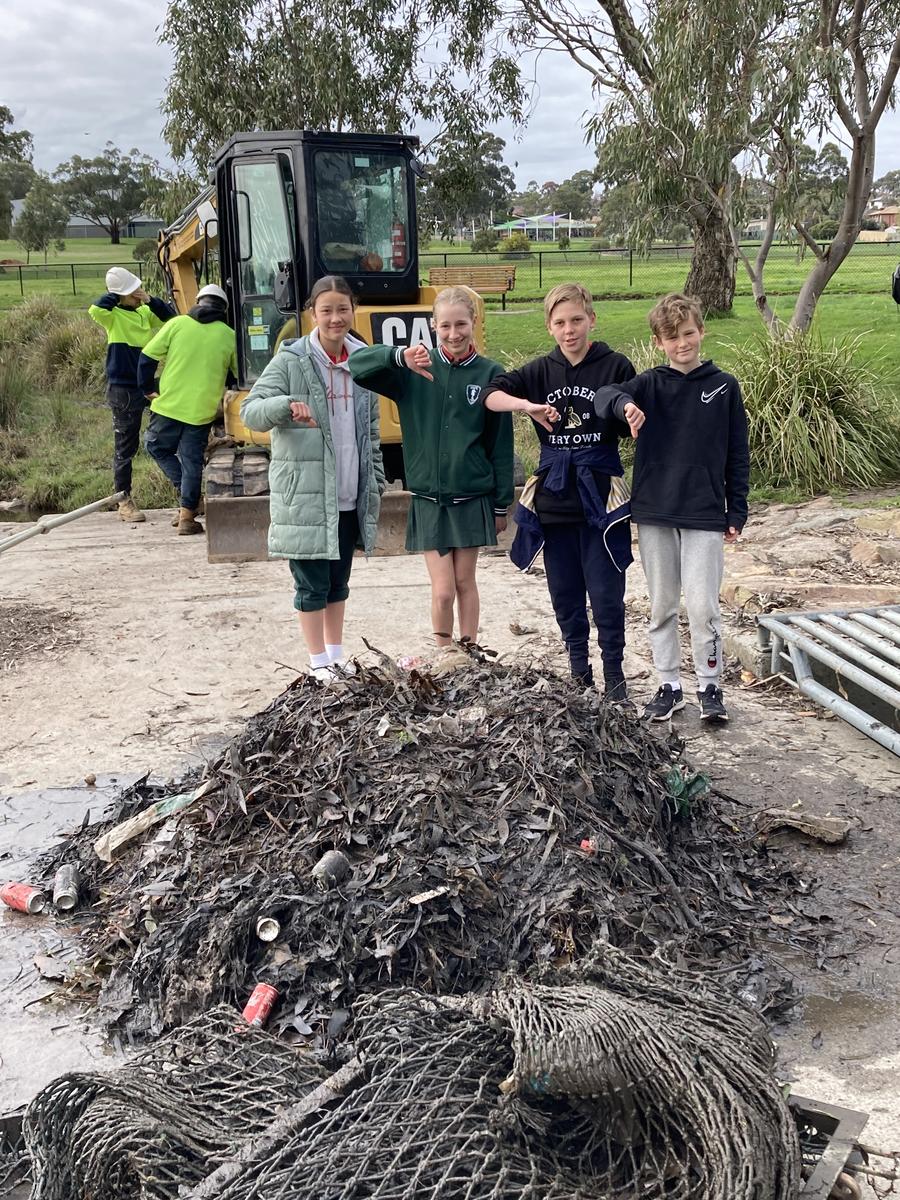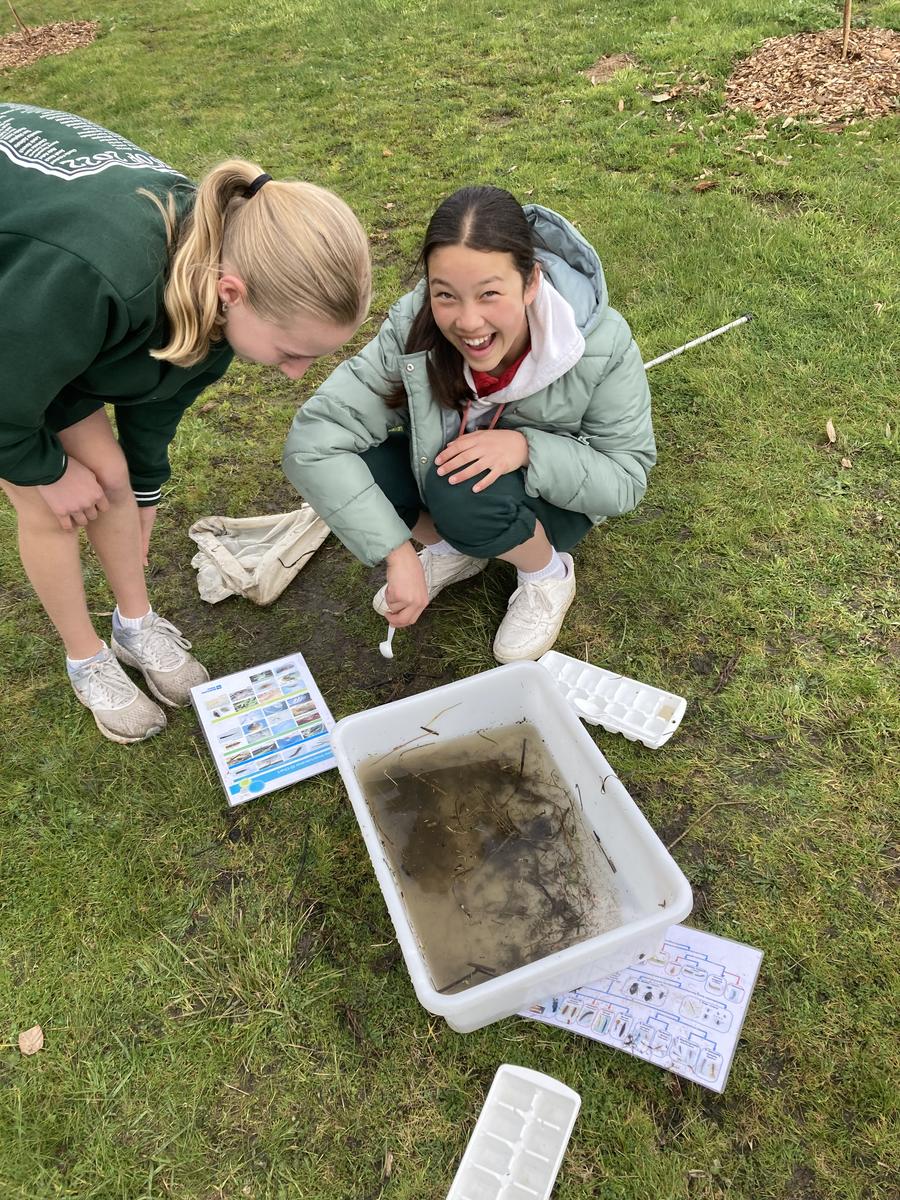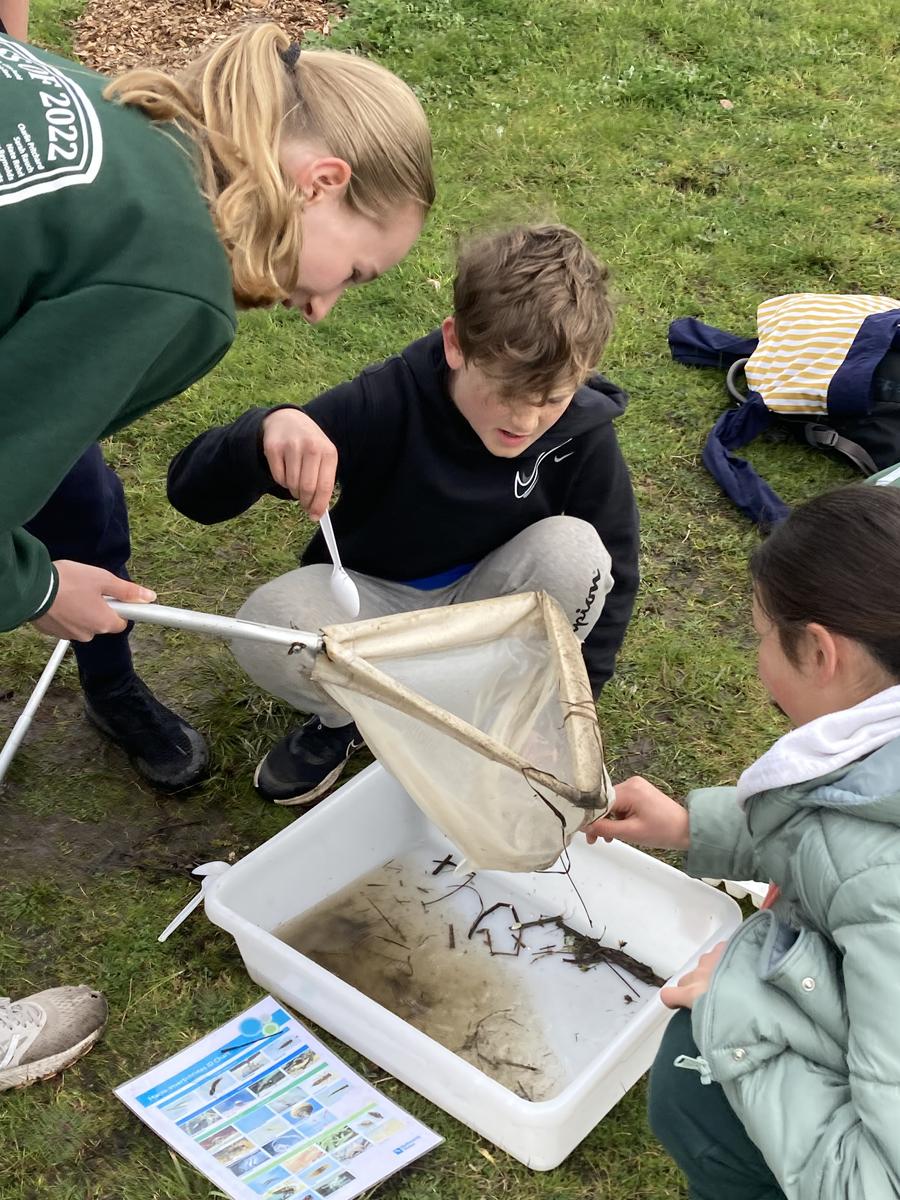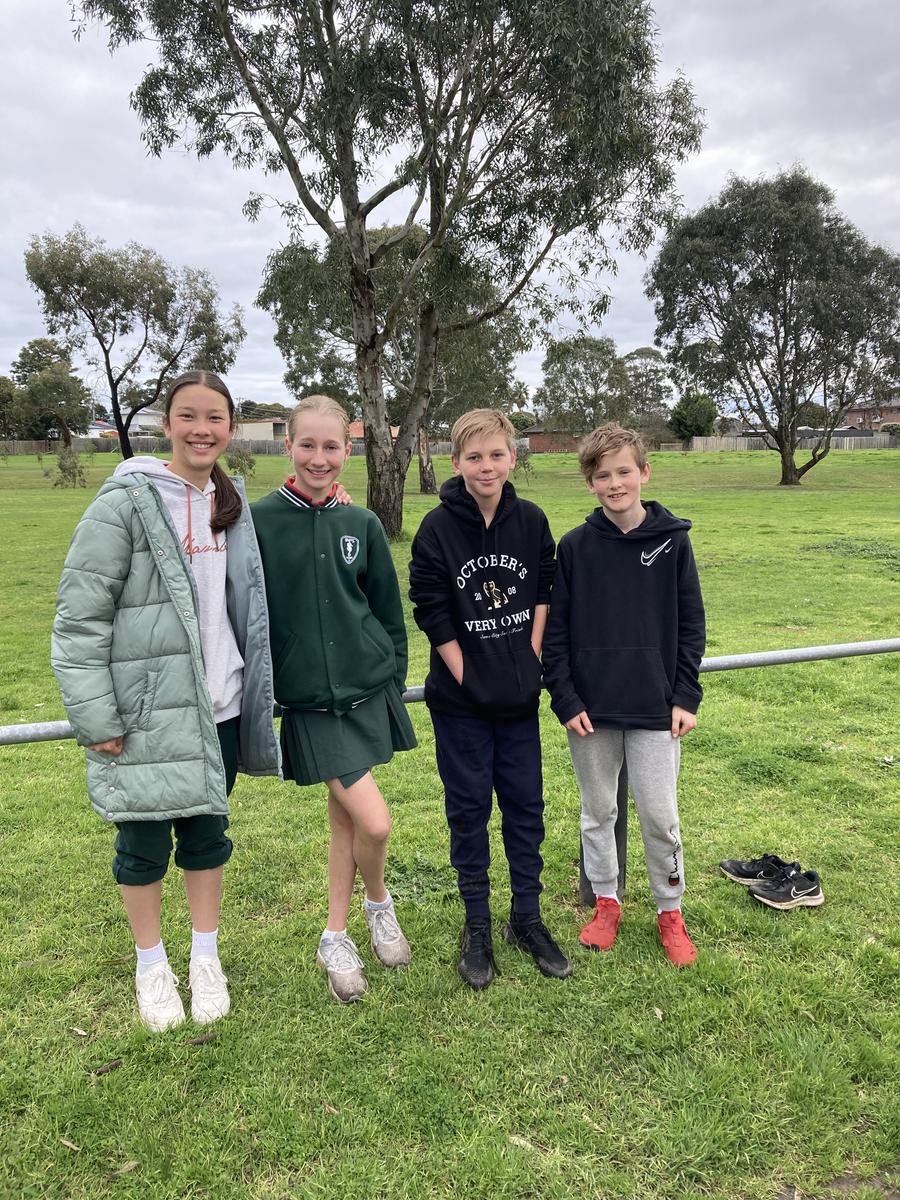Sustainabilty Excursion

Year 6 Sustainability Excursion
On Thursday 1st of September the Sustainably Captains (Orson, Hugh, Anique, Mei, and Verity) went on a special excursion to the Banyan Reserve. Banyan Reserve is a large wetland near Frankston and contains a water basin. When we got there, the excursion started straight away. Firstly, we changed into old or waterproof shoes as it was going to be so muddy.
We walked to the stormwater drain with the group and learned about how stormwater works and why we are getting so much rain this year. Then we walked to the filter of the stormwater. The way it works is that stormwater runs in an underground pipe system to the reticulated wetlands and through the litter trap to clean the rubbish out of the water. The litter trap is like a big net with holes in it to catch the litter. We saw the workers move the trap out of the pipes and empty it on the concrete floor. There was so much litter caught in it such as wrappers, socks, cardboard, bottles, cans and leaves. We even saw 3 eels slip out of it! It smelt so bad. Some stormwater drains like the ones at the beach don’t always have filters on them so a lot of rubbish leaks into the ocean. This was a very interesting system used for water cleaning and we loved learning about it.
In the Banyan Reserve there are over 20 ponds just like this one. For each pond it costs $1500 per month to maintain and $5 million to build it in the first place. Then we moved on in the muddy grass to our next activity.
After looking at the litter traps, we then moved on to do the next activities. The first activity we did was water testing the creek. We looked at the water and saw how clear it was. We then looked at charts and indicators to see the clarity, saltines, and murkiness. Overall, the water at the creek was quite clear and clean although it was too dirty to swim.
Then we moved on to learn a bit about the frogs that live in Victoria. One of the frogs we learned about was the Southern Toadlet. The Southern Toadlet is about the size of a 5-cent coin. It has a dark brown, dark grey or dark olive-green back, with many distinct black spots and bumpy skin. The underside, especially throat and limbs, is a bright orange yellow, with black and white marbling on the belly.
The next activity was looking at the invertebrates in the pond. An invertebrate is an animal without a backbone or skeleton. We had 2 different nets to use to find little creatures in the water. The water was muddy and murky, so it was hard to find anything. We fished for invertebrates with the nets then put our findings in tubs of water. We found water nymphs, lots of water mites, mosquito fish and a leech.
We had such a fun day and a big thank you to Mrs. Gill for organizing it.

